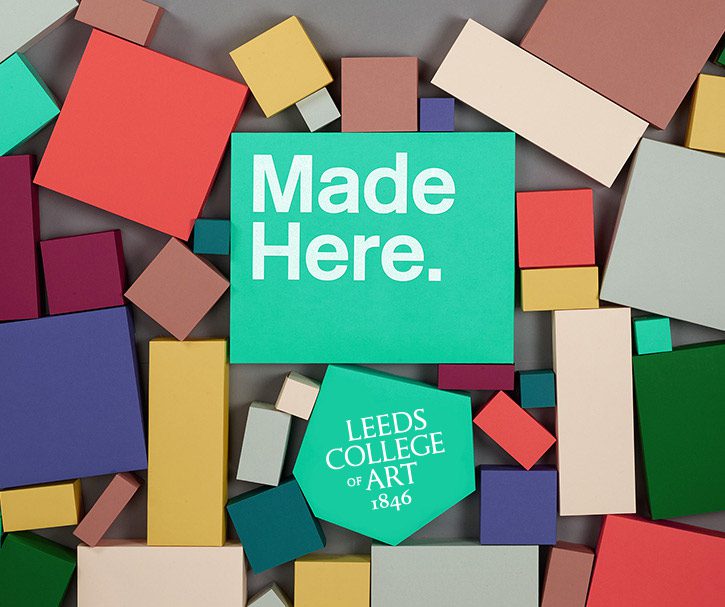It must now be regarded as a tradition that a British art college education entails a prolonged immersion and exercise in extraordinary interdisciplinary innovation. The provision of conditions in which excellent popular music bands, fashion designers, sculptors, photographers, graphic designers, illustrator, animators, painters might emerge to flourish is a nurturing balance requiring delicacy. Semiotic and philosophic discourses are subject to as varied an interpretation as there are institutions, and then as there are individuals instructing within those institutions.
Consensus concludes in a taxonomy of disciplines, which might or might not be judged in the future to supply the correct degree of conservatism. At Leeds College of Art these were: Fine Art, Visual Communication, Photography, Printed Textiles & Surface Pattern Design, Illustration, Creative Advertising and Animation. Enabling creativity effectively is a practice itself requiring genius.
The number of artists and works in Made Here was considerable. A good deal of the work dealt with highly topical issues with broad resonance. Chris Filby had produced a map detailing global migration crises. A geometrically regulated iteration of open doors infused the map with both factual accuracy and finesse. Hollie Waters offered a triptych reminiscent in style of photo-realism, in which an imagined future museum exhibited The Last Polar Bear, The Last Orang-utan, The Last Dolphin. Clinical lonesomeness combined with natural beauty brought pathos.
Izzy Drake satirised The Daily Mail for its scapegoating and aggression frustration. It is a very popular newspaper, of course, therefore the answer to the question of whether or not it can be satirised must be positive. Similarly, Lauren Cogne addressed, with photographic images, the issue of the false representation of reality in social media – somewhat depressing images of the negative aspects of student life were offered. This is an impressive subject area with much mileage. Also topical was Amelia Robertson’s photography portraying what remains of British engineering. A reaction of nostalgia in the viewer provokes further reflection.
Rob Searle presented a brutally honest depiction of West Yorkshire: a graffito by the English Defence League is captured alongside bleak dilapidation. Matching up comparable themes within a different medium altogether were Freya McWatt’s collages in which textures from natural and urban landscapes were juxtaposed. Poignant geometric similarities are highlighted. Charlotte Cook effectively highlighted unwanted, discarded objects in an aesthetically pleasing light demonstrating positively the beauty of rejected items, and excellent were Kinya Kopacz’s selection of photographic images – At One with Nature – in which six separate fashion shots explore the relationship between the model and nature. Images were related by juxtapositions of coloration and tincture.
Unrelated to an origin of photography, but equally remarkable, was Ellie Edwards’ exhibition involving interactive software enabling users to engage in projection and exert control over technology. Thomas Pater’s installation made an irksome impression of the clinically pallid anonymity of domestic and industrial uniformity. From Fine Art, the work of Hannah Ward made and impression of stark contemporary randomness with a black and white wall peppered with fragments of text. Chloe Martin’s oil and small scale canvases gave a haunting and wrought treatment to the human form, irksome because of repetition and bleakness. Ella Pattinson’s floor-to-ceiling-suspended two-dimensional images were charismatic and innovative.
In Creative Advertising, the work of Lyndarn Harrison was extremely refreshing, and notable were the illustrations of Rosie Fairholm that demonstrated fine detail and unique style, whilst Olivia Newsome’s are remarkable for their stylistic continuity and integrity. These three made an impression of considerable and durable impact. The same can be said of the work of Lucy Everitt, which involved textiles. Here, embroidery was employed to explore issues faced by women to great effect.
Daniel Potts
Made Here ran from 11 – 16 June. Find out more: www.leeds-art.ac.uk
Credits:
1. Poster for Made Here (2016). Courtesy of Leeds College of Art.





